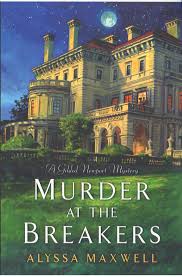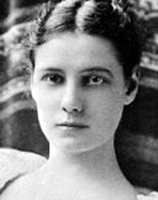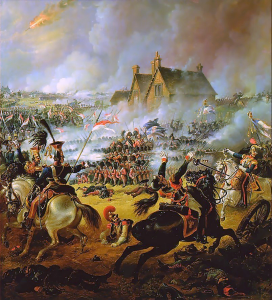I am doing a last set of post 1st round revisions of A Notorious Ruin before I send it off for final editing. Lots of boxing in it. So you get this post.
look! A lady in a pretty dress!
I am doing a last set of post 1st round revisions of A Notorious Ruin before I send it off for final editing. Lots of boxing in it. So you get this post.
look! A lady in a pretty dress!What are you waiting for? It’s free. It’s sample chapters from books by several of the Risky Authors.This is your chance to check us out Risk Free at the Riskiest Regency site on the internet. Go forth and download.
First, catching up with news!
A Notorious Ruin, Book 2 of the Sinclair Sisters series is in final edits. I should have a cover shortly. It’s getting real, folks! Readers of this blog probably know there is boxing in this story. I like it. Lots and lots.
Alphas Unleashed, a SciFi and Paranormal Romance Anthology is out now! My story is Dead Drop which is set in the My Immortals series world. There are stories by SE Smith, Mina Khan, me, and Michele Callahan. Here are some buy links should you be so moved:
Print is on its way…
In October, I’ll have a story in a Historical Romance Christmas Anthology, In The Duke’s Arms. That’s the name of a coaching inn in Nottinghamshire. Get it? It’s going to be awesome. My story has the duke. I started writing it yesterday. The authors are:
Grace Burrows
Miranda Neville
Shana Galen
Carolyn Jewel (that would be me!)
I have a very good set of references on this, but it never hurts to look around for more information. I need to pull out those sources and get reacquainted with them. Allow me to digress a bit before I get to the point.
You may or may not recall that in the course of some other research, I came across information about taxes. That research also uncovered information about the British lottery. As in, you could win a lot. Which got me thinking…
Years ago, I read a story by Balzac in which a very poor character had been saving up money to buy into the national lottery using a special run of numbers. At last, the character has enough money and entrusts the money and her run of numbers to someone else to purchase the ticket. And the number wins!!! Only the person spent the money on something else and never bought the ticket. Then there’s the Conrad story (Or was it Henry James?) where a man’s son is reckless in every way the father fears and has warned him against. Except the young man places a wager that will bankrupt the boy … and he wins, and on and on, with everything turning golden for this young man. Those two stories have been bumping around in my head for years.
And so, it’s early days and everything could change, but the heroine who will find herself In The Duke’s Arms (bwahahahahah!) is a very poor relation who wins the lottery and then buys a house in Nottinghamshire. Assuming this stays as the basic premise, as I was notebooking, I got to wondering how much she should win, and what her initial expenses would be, what it would cost her to live in her house, and how much she could routinely give away as charity without compromising her future. Jane Austen, it turns out, budgeted the equivalent of $600. I have only one source for that so consider it unconfirmed.
And that lead me to this fantastic site: The Price of a Loaf of Bread. Go there. Bookmark the site. Spend hours reading. The link convention there is weird: highlights instead of underlining, so when you see that, it’s a link to more great content.
After clicking around to various places and sites, the yearly amount spent on food per average person during the Regency, was about £3.5, subject to variations depending on the harvest. In calculating my heroine’s possible expenses I bumped that figure up a bit, but not by much. I have decided, preliminarily, that she will win £75,000 pounds and spend £20-25,000 on her house, outfitting it, buying new clothes, staffing up, etc. I know from seeing period advertisements that rather large estates were advertised for £8-16,000 pounds.
And now here is my question for you:
The scenario:
You are a poor female relation, 25-28 years old, living with relatives who are heedless of you. You are a chaperone to the pretty young daughter with a fortune. Everyone likes you, though, because you are genuinely nice (even though sometimes you wish you didn’t have to be.) You can look forward to a life of dependency, as you have no fortune and are only average in looks.
And then…
You buy a lottery ticket and you win. A lot. Besides an estate, what would you buy for yourself? What indulgences would you allow yourself?
Go.
First things first–winners!!! The winner of a copy of my book Lady Midnight is…HJ!!!! Email me your info at amccabe7551 AT yahoo and I will get it sent out to you…
 Today I am buried in some revisions, but Alyssa Maxwell, the author of the fabulous new “Gilded Newport” mystery series, has graciously agreed to do a guest blog for us! I read Murder at the Breakers and loved it. Comment for a chance to win a signed copy, or an ARC of the next in the series Murder at Marble House…
Today I am buried in some revisions, but Alyssa Maxwell, the author of the fabulous new “Gilded Newport” mystery series, has graciously agreed to do a guest blog for us! I read Murder at the Breakers and loved it. Comment for a chance to win a signed copy, or an ARC of the next in the series Murder at Marble House…
She Could Not/Would Not Do THAT!
How many times have you heard this in terms of historical heroines? That for a historical heroine to be believable, she must adhere to the social standards of her times and refrain from any activities that were not considered appropriate for a lady of her era.
To that I respectfully say, “Pish!”
The achievements of women throughout history have been pitifully under-reported and, as a result, sadly dismissed, and although we’re becoming more enlightened about the varied roles women actually did play through the centuries, notions of women not coming into their own until the latter half of the 20th century persist.
When I was crafting my sleuth for my Gilded Newport Mysteries, I knew what was considered a “typical Victorian woman” wouldn’t do. To be a strong and compelling enough character to keep readers interested in not one but multiple books, she needed to be smart, resourceful, forward-thinking, and unafraid to step out of the traditional roles of the times.
But would she be an anachronism? A look at the 1890s supported my theory that not all women existed in a gilded cage. The Suffragette Movement was gathering steam, as was the concept of what was being hailed then as the “New Woman.”
According to author Jean Matthews in The Rise of the New Woman: The Women’s Movement in America, 1875-1930,the “new woman” was “young, well educated, probably a college graduate, independent of spirit, highly competent, and physically strong and fearless.” She spanned economic classes, and could be single or married. Often, she took an active interest in political issues.
Another name for the New Woman was The Gibson Girl, coined for artist Charles Dana Gibson, who in his sketches revealed and then actually perpetuated the changing appearance of women in the 1890s. They shed their restraining corsets, petticoats and frills in favor of simple shirtwaist blouses and long skirts that allowed for activities such as tennis and bike riding. Gibson Girls were confident, capable, athletic, and even flirtatious and again, they hailed from all segments of society.
 For the character of Emma Cross, I drew on the real life Gilded Age journalist, Nellie Bly. At a time when most female reporters were relegated to the society columns, Bly stubbornly proved her mettle by seeking out hard news. In 1887 she had herself committed to an insane asylum, an undercover assignment lasting 10 days, in order to investigate and bring attention to the appalling conditions suffered by mental patients. In 1888, Bly traveled alone around the world in under 73 days, beating the fictional record of Jules Verne’s Phileas Fogg in AROUND THE WORLD IN EIGHTY DAYS.
For the character of Emma Cross, I drew on the real life Gilded Age journalist, Nellie Bly. At a time when most female reporters were relegated to the society columns, Bly stubbornly proved her mettle by seeking out hard news. In 1887 she had herself committed to an insane asylum, an undercover assignment lasting 10 days, in order to investigate and bring attention to the appalling conditions suffered by mental patients. In 1888, Bly traveled alone around the world in under 73 days, beating the fictional record of Jules Verne’s Phileas Fogg in AROUND THE WORLD IN EIGHTY DAYS.
I wouldn’t, however, consider Nellie a true feminist—not when one of her lifelong ambitions was to marry a wealthy man, which she managed to do at the age of 31. Her wealthy guy was millionaire manufacturer Robert Seaman, who was 40 years her senior.
Like Nellie, I don’t see Emma Cross in feminist terms, either. She simply isn’t political enough. She doesn’t take up broad causes with activism, because she’s too busy taking care of loved ones and taking in women in need in Newport. Rather than being a feminist, Emma is an individual who recognizes her own potential, appreciates the resources that have given her a good measure of independence, and will not accept a pat on the head in lieu of professional opportunities she has worked hard to earn.
You can “see” Emma in action in Murder at The Breakers (available now), and in Murder at Marble House (releases in September), and judge for yourself—anachronistic, or one of the many women throughout history who stood out because they stood up for what they believed in.
 You can find out more about my Gilded Newport Mysteries at http://alyssamaxwell.com. I love to hear from readers, so while you’re there drop me a line!
You can find out more about my Gilded Newport Mysteries at http://alyssamaxwell.com. I love to hear from readers, so while you’re there drop me a line!
I need to finish my book today, the start of a new series of four books. The series will be called The Scandalous Summerfields and I’ll be talking more about it and about this book as time goes on.
At this point in the book, my hero and heroine are in Brussels and it is the eve of the Battle of Waterloo. It seems fitting, then, that I should entertain you with images of the battle.

I’ll be back with a proper blog next week!